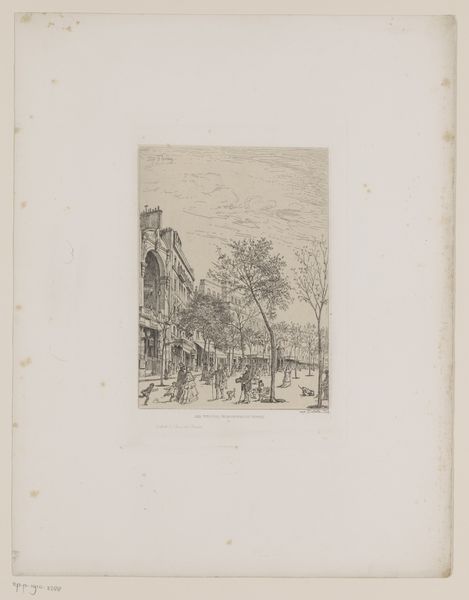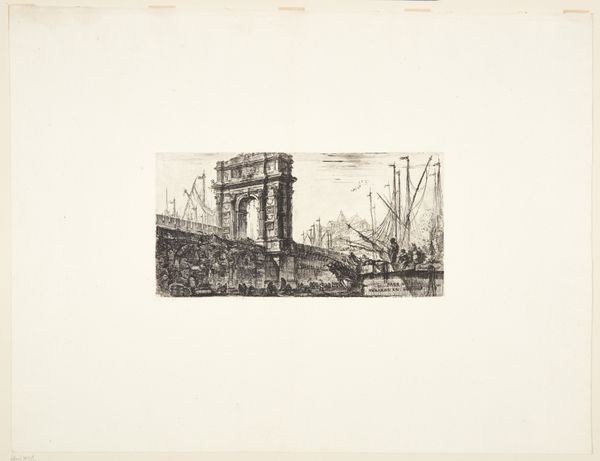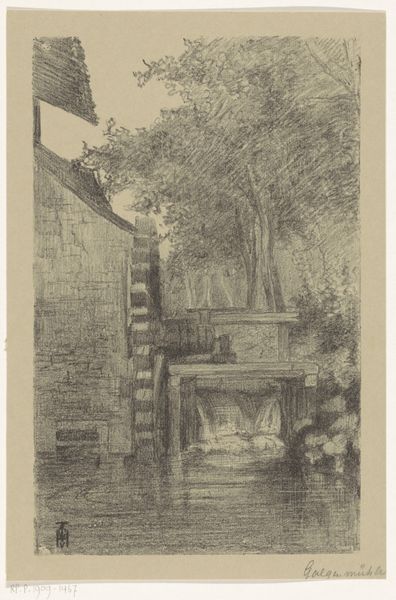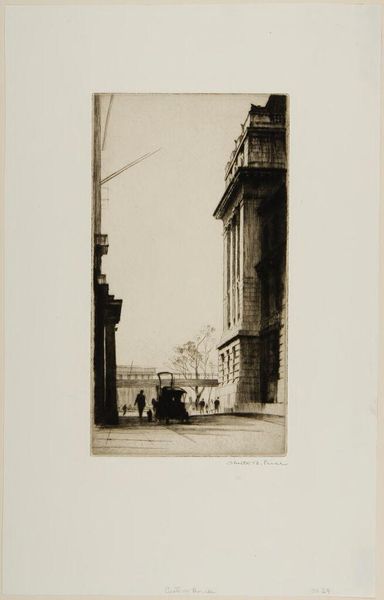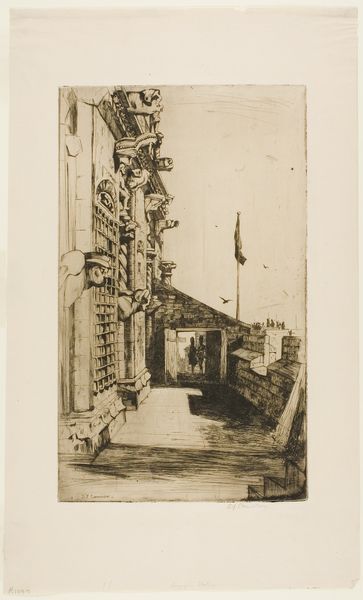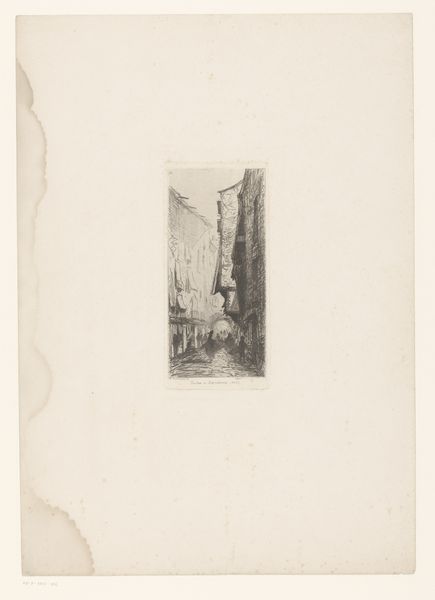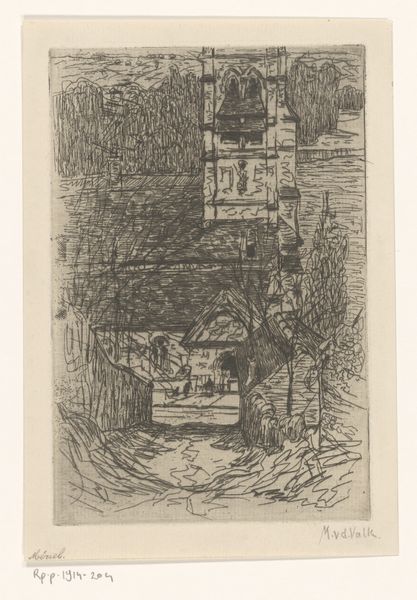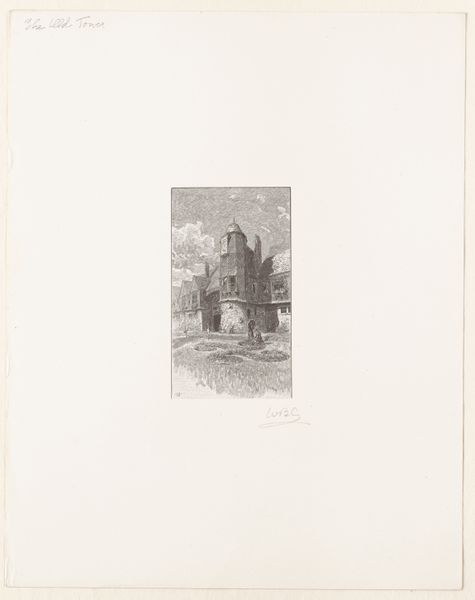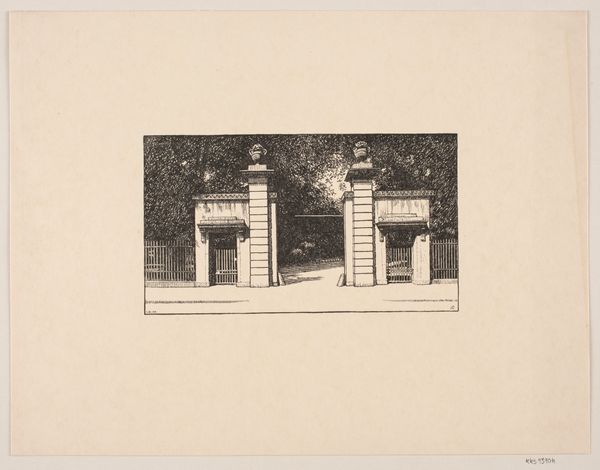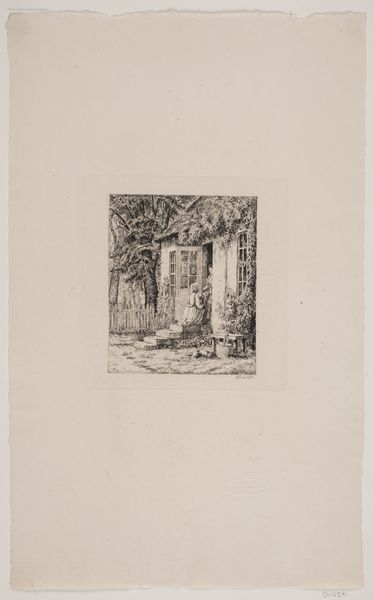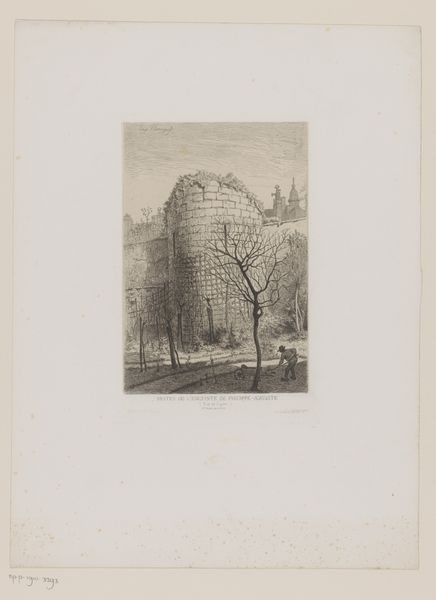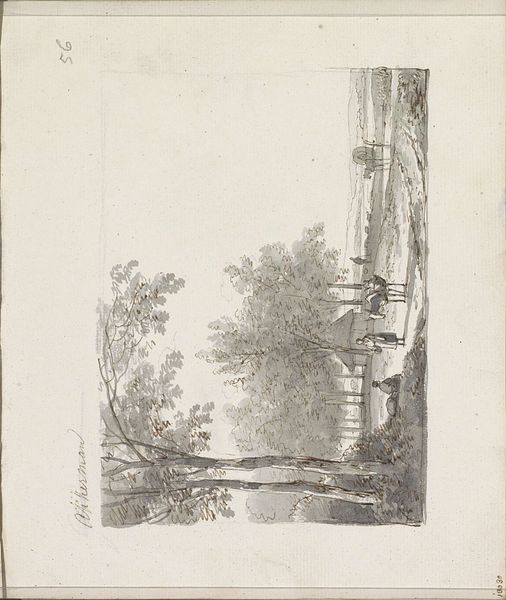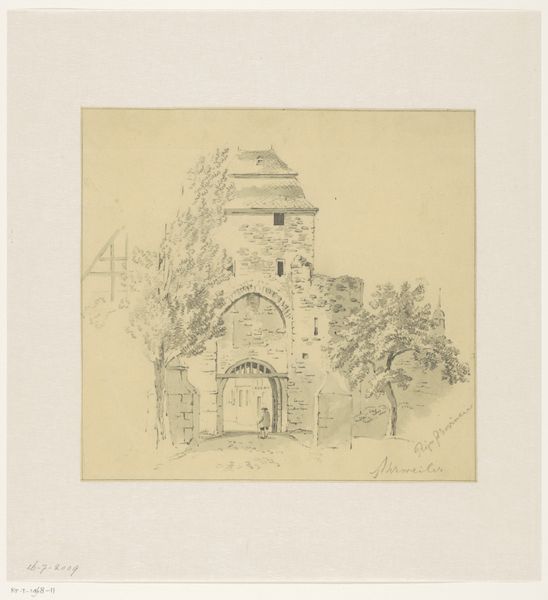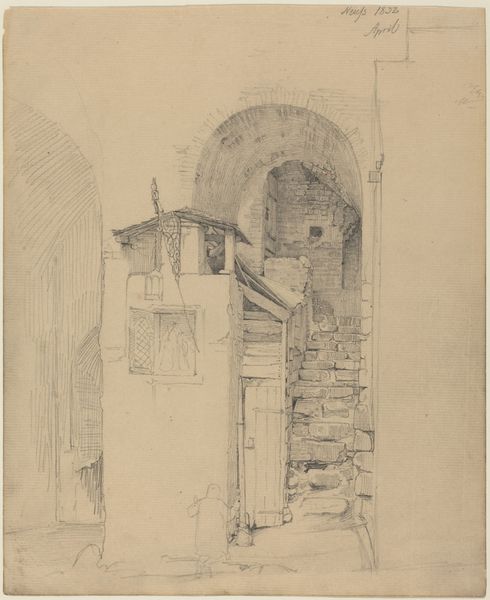
Dimensions: 308 × 135 mm (image/plate); 421 × 207 mm (sheet)
Copyright: Public Domain
Gustave Leheutre made this print, "Ruins of the Old Tuileries, Paris", using etching, a printmaking technique with a long and fascinating history. The process begins with a metal plate, usually copper or zinc, covered with a waxy, acid-resistant ground. The artist scratches an image into this ground, exposing the metal beneath. When the plate is dipped in acid, the exposed lines are eaten away, creating grooves. The longer the plate sits in the acid, the deeper the lines become, allowing for a range of tones in the final print. Ink is then applied to the plate, filling these grooves. The surface is wiped clean, and the image is transferred to paper under high pressure. Look closely, and you’ll see the rich texture created by this process. The etched lines give a sense of depth and atmosphere to the ruins. The final image we see retains a trace of the artist’s labor; the acid’s bite, the pressure of the press, all combine to give the print its unique character. This print reminds us that art is not just about the image, but also about the intimate relationship between the artist, the materials, and the techniques they employ.
Comments
No comments
Be the first to comment and join the conversation on the ultimate creative platform.
